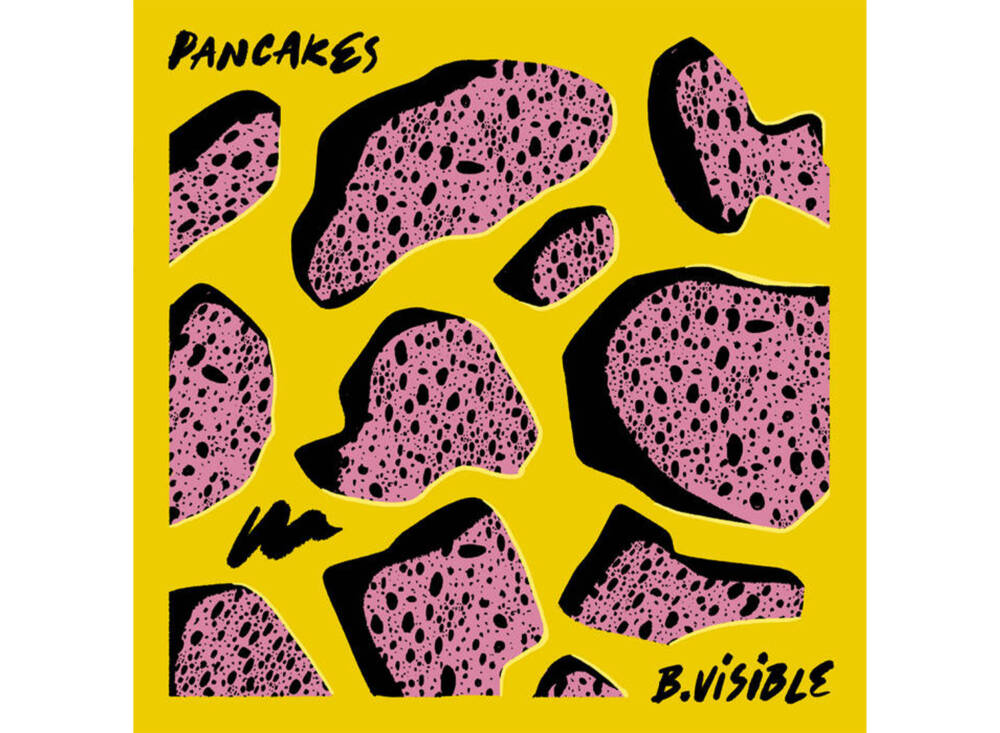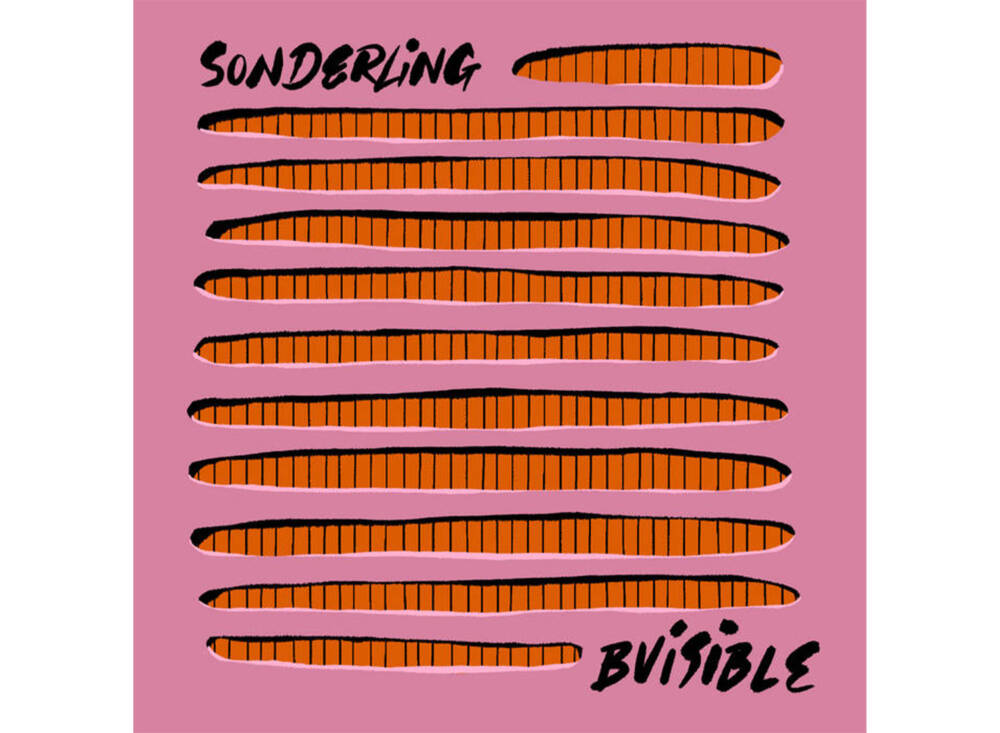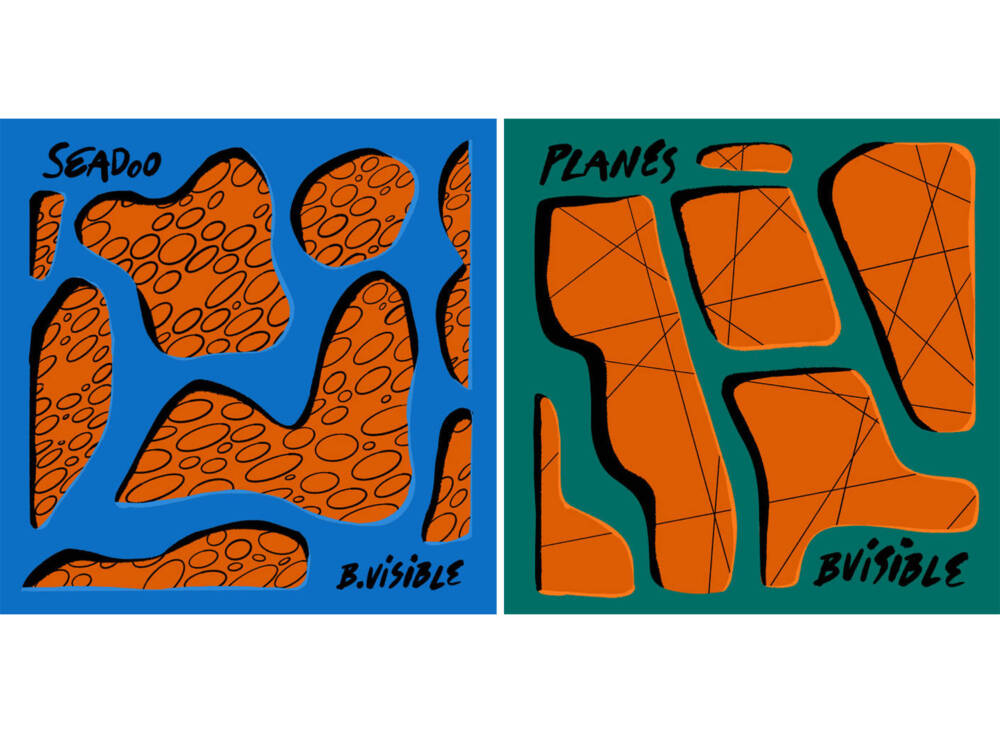An empowering fusion of music and design. – Interview with B. Visible and Daniel Triendl
The new second album “In Between Places” by Viennese producer B.Visible in collaboration with a designer Daniel Triendl not only makes us feel up high, but also challenges our thoughts, gives us a sense of hope and calls to action. Ticklish and melancholic sounds gently harmonize with a cover artwork by Daniel, who seems skillfully translating his credible bold design throughout music and merge with it. We spoke to the guys about creative process and their mutual approach, confidence, doubts and bond of design and music. Here you can check out the blending sharp electronics of the album and buy vinyl.
Your new album sounds intellectually melancholic and personal. Do you raise any topics behind the “In Between Places”?
B. Visible: I didn’t feel like experimenting too much, but did what cheered me up personally. That’s probably where the melancholy came from. I would have to philosophize in order to interpret big topics in my instrumental music, but let’s say the isolation was quite present during the creative phase.

I assume you write alone a lot of the time. How was it collaborating with Daniel? Do you prefer to coordinate the whole process or to lean on designer’s vision entirely?
B. Visible: I usually contact Daniel when I have the first sketches ready. Then comes a sketch from his side. With the last album he was actually the first person to hear the music. And then it was also really exciting to see what the result would look like visually and what he thought of the drafts. His first design was already quite close to the final outcome, as I loved it so much. But yeah, we exchange music and designs till the final master of the tracks. The creative process is from both sides very balanced. There really aren’t any rules. We have known each other for a long time and at some point we noticed that our output harmonizes quite well.
How do music and design correlate? And how was it especially in context to your current release?
B. Visible: Something visual can give music so much more power and expression. Especially when you think about music-videos, movies or concert visuals. But even pulling out a record and looking at the artwork can get you in certain mood before you listen to the music. So I see there a very strong connection between music and design. That was now very superficial first off. Regarding my album, I think that Daniel went into great detail and visually nailed the sound extremely well. There are these shapes and colors that work in a retro context, but appear totally contemporary due to their arrangement.
How was the creative process behind “In between Places” and what’s your songwriting process normally like?
B. Visible: It started out like any other project, with two or three tracks forming the base and the rest being built around it. However, what was different was that I tried to pull distinctive elements throughout the whole album. I have reduced myself to certain equipment in order to be able to work out the common thread better. In earlier productions I packed everything in and celebrated the chaos.
Usually the ideas come up when I start producing. Chord progressions are a nice foundation that let me get creative quickly.

Your music seems nostalgic, but at the same time extremely contemporary. Where do you most often find the inspiration behind the work you make?
B. Visible: I’m trying to find the balance between the sound aesthetics I’ve been enjoying already as a child and the sound that can be created with modern day technology. Inspiration comes by simply other music or my close surrounding.
What feeds your creative confidence, and what do you find drains it?
B. Visible: Feeds: Being played on the radio while driving my car. Drains: Being hungover, getting no reply to my mails.
What are qualities in a song that make you think that they’re good?
B. Visible: It’s nice when a song has a bit of a soul, drives some emotion and creates a picture in my head.
So how do music and design correlate for you and how would you describe the creative process behind “In Between Places”?
Daniel: For us, music and design have a lot in common, for example: rhythm, form, texture, composition, color and contrast… Many characteristics cross over very well and that’s how it is when we work together. Graphically as well as musically, I am on the same wave with Peter (B. Visible) and we have a complete mutual understanding.
The creative process with Peter is always very exciting and a lot of fun. Many aspects develop in a workflow. Starting the project without any restrictions and experimenting creatively usually gives us the first impulse. With such a unconfined approach, we take away the pressure to perform and can create freely. This makes the project very special and inspiring for me. So it’s very different from my other illustration/design collaboration, where everything has to be very structured.

What’s been moving you while creating the “In between Places” design? Have you been listening to it much while working on visuals?
Daniel: Peter’s music and his approach to creativity is very inspiring to me. He is a master of combining and kicking things off. He manages to harmoniously unite impossible contrasting things. Fun, experiments and a lot of playfulness are part of him. I try to reflect this in the visual design. Having fun, laughing and not seeing things too strictly are what make up the project and its workflow. I have often listened to Peter’s music, and without knowing him and his work, the design would probably have been very different.
Is there any tips we should know while collaborating particularly with musicians?
Daniel: Just start without thinking too much. Accept mistakes and work through them.
Through your works it seems like you discover beauty in a various simple things. Where do you find inspiration in your day-to-day life?
Daniel: Yes, it’s true, it’s the little things that give me the most pleasure. I find it fascinating to look at small ideas more closely and to let off steam within this framework until I come up with a result. I usually find these little ideas in everyday situations. I am also inspired by my friends, other artists and my wife.

Is there one thing you’ve noticed that has remained the same in your output over the years?
Daniel: Colors, shapes and compositions have always been very important to me and I’m still assigning them a great deal of importance. That hasn’t changed.
What fascinates you most about working as a multidisciplinary designer?
Daniel: The variety. Finding new solutions and constantly developing myself makes me curious. I love it when my work leaves the screen and is physically produced, like the records and the poster of “In between Places”.